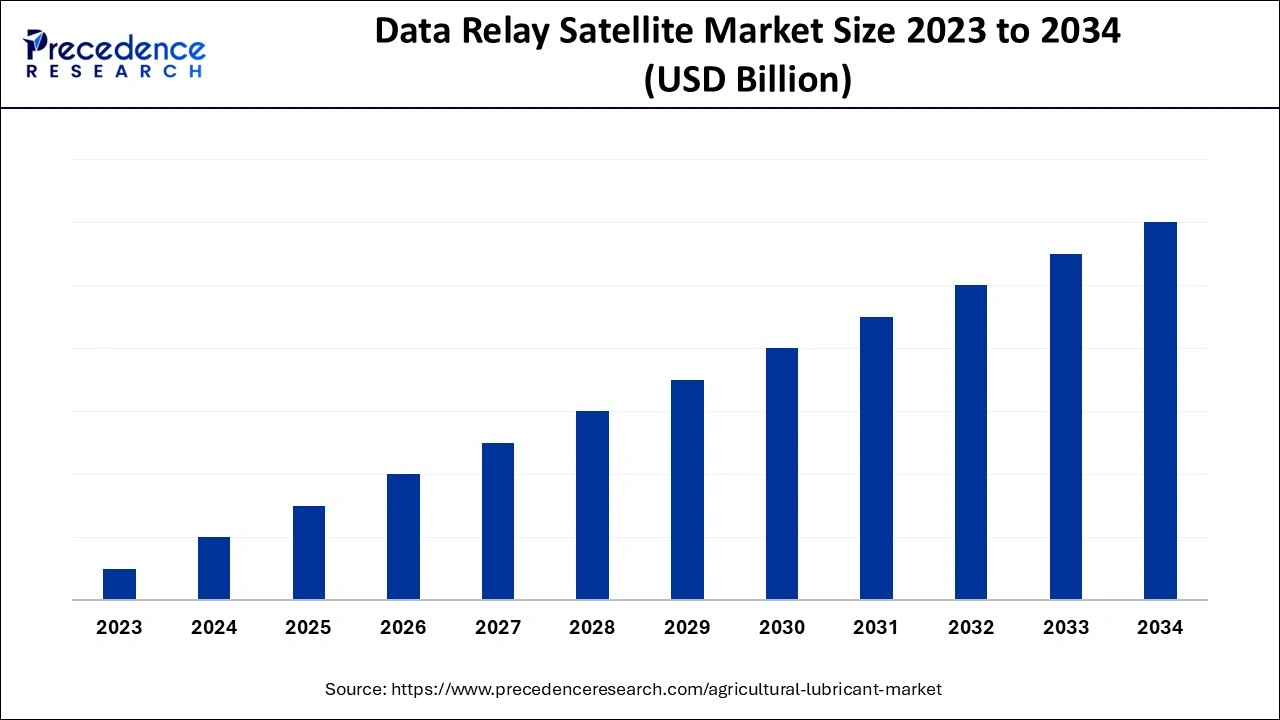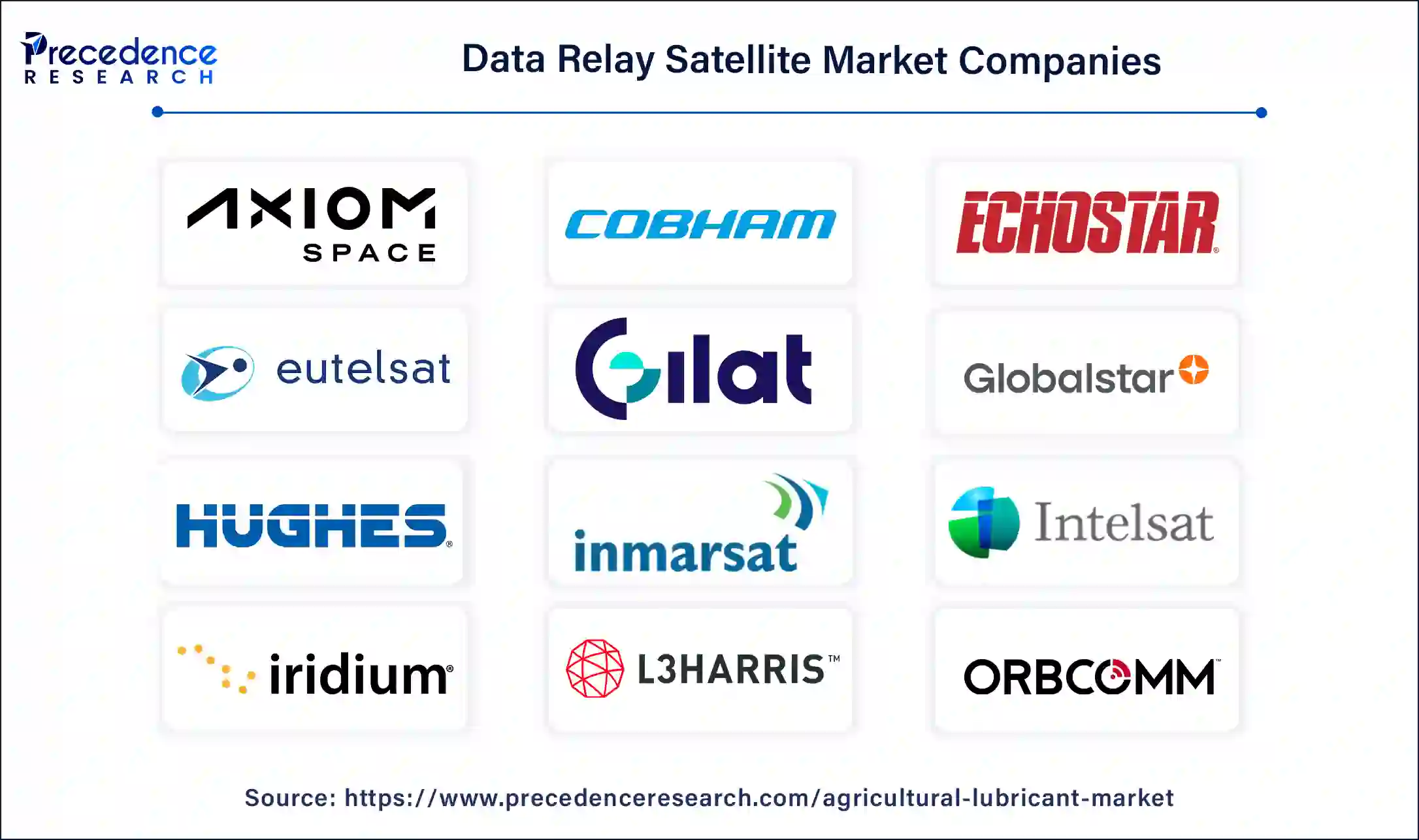April 2025
The global data relay satellite market is projected to grow at the fastest CAGR during the forecast period from 2024 to 2034. The rising need to relay signals between spacecraft and ground control stations on Earth is increasing the demand for the data relay satellite market.

The integration of artificial intelligence (AI) into a data relay satellite system has the potential to process complex data sets quickly and optimize network infrastructure. The analyses of recorded data through AI algorithms help in predicting network traffic patterns, optimising resource allocation, and identifying congestion points. The primary advantage of AI in the data relay satellite market is the ability to improve accuracy. With the help of machine learning techniques, AI can discover and analyze abnormalities in satellite data, which makes it easier to spot issues and increases the dependability of satellite communication.
The data relay satellite system is comprised of continuous real-time communication between low Earth orbit-bound spacecraft and the ground station, as well as satellite communication. This system receives a command from the ground station and then forwards it to a user satellite through an RF (inter-satellite link); the user satellite returns telemetry through another cross-link to the relay satellite and sends it back to the ground station. This way, the transmission of data is complete.
On the international landscape, NASA’s Tracking and Data Relay Satellite System (TDRSS) is supporting communication and tracking services for NASA’s LEO spacecraft. The European Data Relay System (EDRS) transmits data between low-orbiting satellites and geostationary EDRS payloads using innovative laser communication technology, creating a Space Data Highway. The involvement of Asian countries like Japan with Kodama and China has its Chinese Data Tracking and relay system with three satellite operations.
| Report Coverage | Details |
| Dominating Region | North America |
| Base Year | 2023 |
| Forecast Period | 2024 to 2034 |
| Segments Covered | Application, End-use, Frequency, and Regions |
| Regions Covered | North America, Europe, Asia-Pacific, Latin America and Middle East, and Africa |
Real-time communication
The data relay satellite market is reliable in supporting human spaceflight, scientific exploration, and satellite operations, revolutionizing how we communicate in space and extending our reach into the cosmos. DRSS network provides continuous and reliable communication for various space missions. Since the launch of the first data relay satellite system, it has been an essential asset in facilitating communication and in numerous space missions such as the Hubble Space Telescope, Space Shuttle program, and the International Space Station (ISS).
Limited bandwidth and latency
Bandwidth and latency are primary challenges in the data relay satellite market, directly impacting the security design. Each frequency band has specific bandwidth limitations, which easily become overloaded due to the high volume of data traffic. This issue can be eliminated by implementing secure communication protocols, encryption algorithms, or a multi-step authentication process.
Global connectivity
The future of the data relay satellite market is expected to expand in powering global connectivity. Satellite technology and innovation continue to advance from delivering the convenience of connectivity on the go to enhancing digital inclusion and equity which also provides reliable connectivity in disaster recovery, satellite internet is becoming crucial in the modern world. The incorporation of the network of networks in satellite communication is anticipated to provide more agile connectivity.
The S-Band segment showed a significant share of the data relay satellite market in 2023. S-band has a frequency range of 2-4 GHz. It is of extreme utility for satellite communication due to its striking balance between bandwidth available and penetration of the atmosphere. The application of the S-band is commonly noticed for weather satellites and mobile communications.
The communication segment held a significant share of the data relay satellite market in 2023. The growth of this segment is due to its ability to provide long-distance communication in areas where traditional wired or wireless connection infrastructure is either unavailable, impractical, or inefficient. The satellite provides relays and amplifies them through the use of a transponder and radio telecommunications signals between a source and a receiver. The application of communication satellites is widely noticed for TV, the Internet, communication, Internet of Things (IoT), mobility, the military, and many more.
The defense segment dominated the global data relay satellite market in 2023, owing to the extensive use of satellites for real-time battlefield monitoring, communication, reconnaissance, and navigation systems such as American Global Positioning System (GPS) and Japan’s Quasi-Zenith Satellite System. With the help of faster tasking of reconnaissance satellites and quicker data retrieval, Data relay enhances defense and intelligence operations. This ability is beneficial in time-sensitive situations, such as monitoring potential threats or responding to natural disasters.
The commercial segment is observed to grow at the fastest rate in the data relay satellite market during the forecast period. The commercial application of data relay satellite systems is commonly noticed in the telecommunication industry, such as 5G networks, which provide high-speed communication services to anywhere in the world, internet provider that offers high-speed broadband connectivity, and media broadcasting, such as television and radio content over satellites.
North America dominated the global data relay satellite market in 2023. The United States has the most satellites orbiting the Earth, with about 2,804 satellites owned or operated by the U.S., which is more than half of the total number of space satellites in orbit. Significant investment in space technology has also been noticed in this region. The government needs satellite communication providers to innovate new developments, continually improve performance, and offer new applications along with integrated/optimized services.
Asia Pacific is anticipated to grow at the fastest CAGR in the market during the forecast period of 2024 to 2034. With 650 satellites in orbit, China is now the second-largest fleet of satellites, followed by the United States. The growth of the data relay satellite market in Asia Pacific is due to the rapid adoption of satellite technology for various utilities in the countries. The Eutelsat offers unrivaled coverage and bandwidth to deliver content to and from virtually any location across the region.

By Application
By End-use
By Frequency
By Geography
For inquiries regarding discounts, bulk purchases, or customization requests, please contact us at sales@precedenceresearch.com
No cookie-cutter, only authentic analysis – take the 1st step to become a Precedence Research client
April 2025
March 2025
January 2025
February 2025